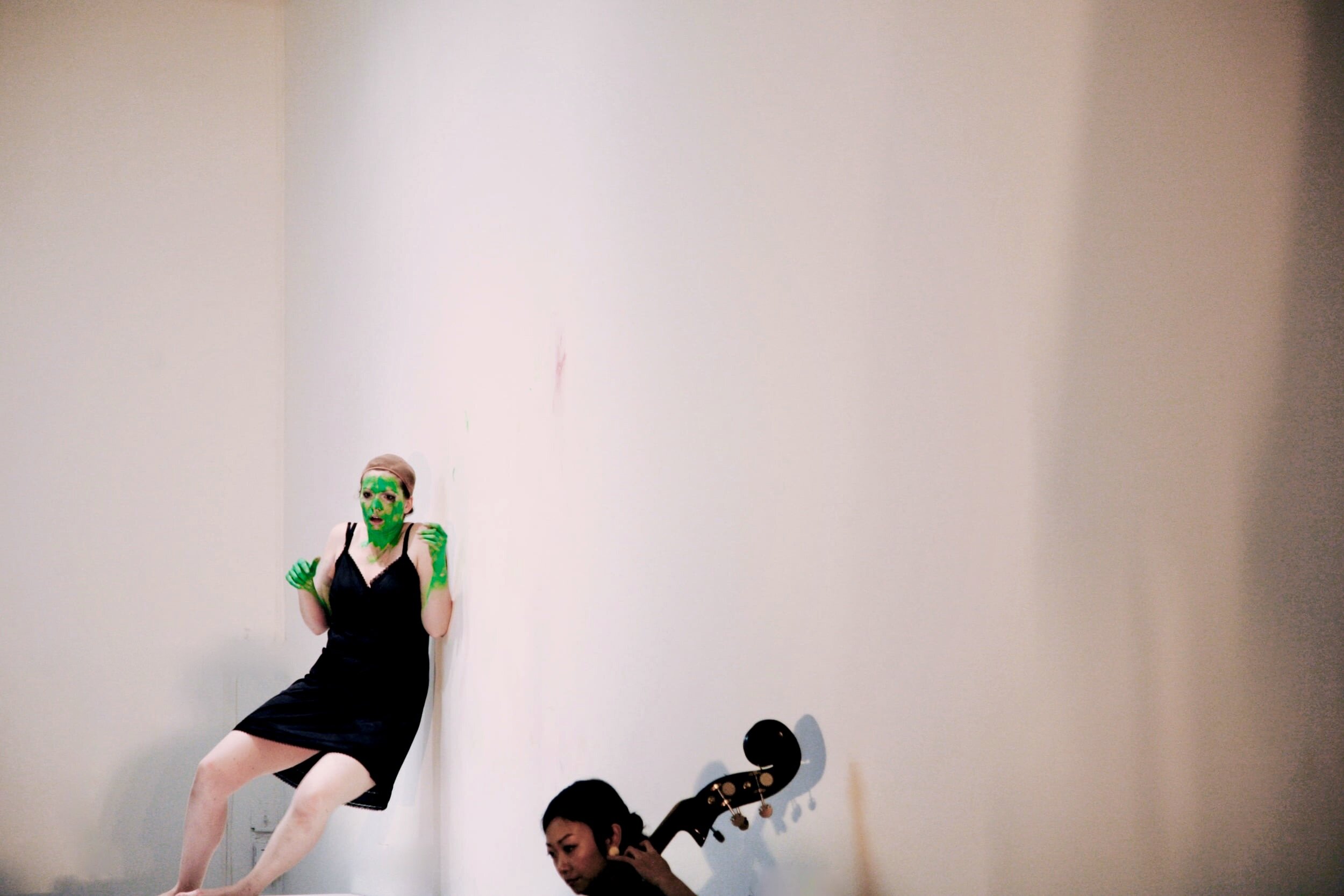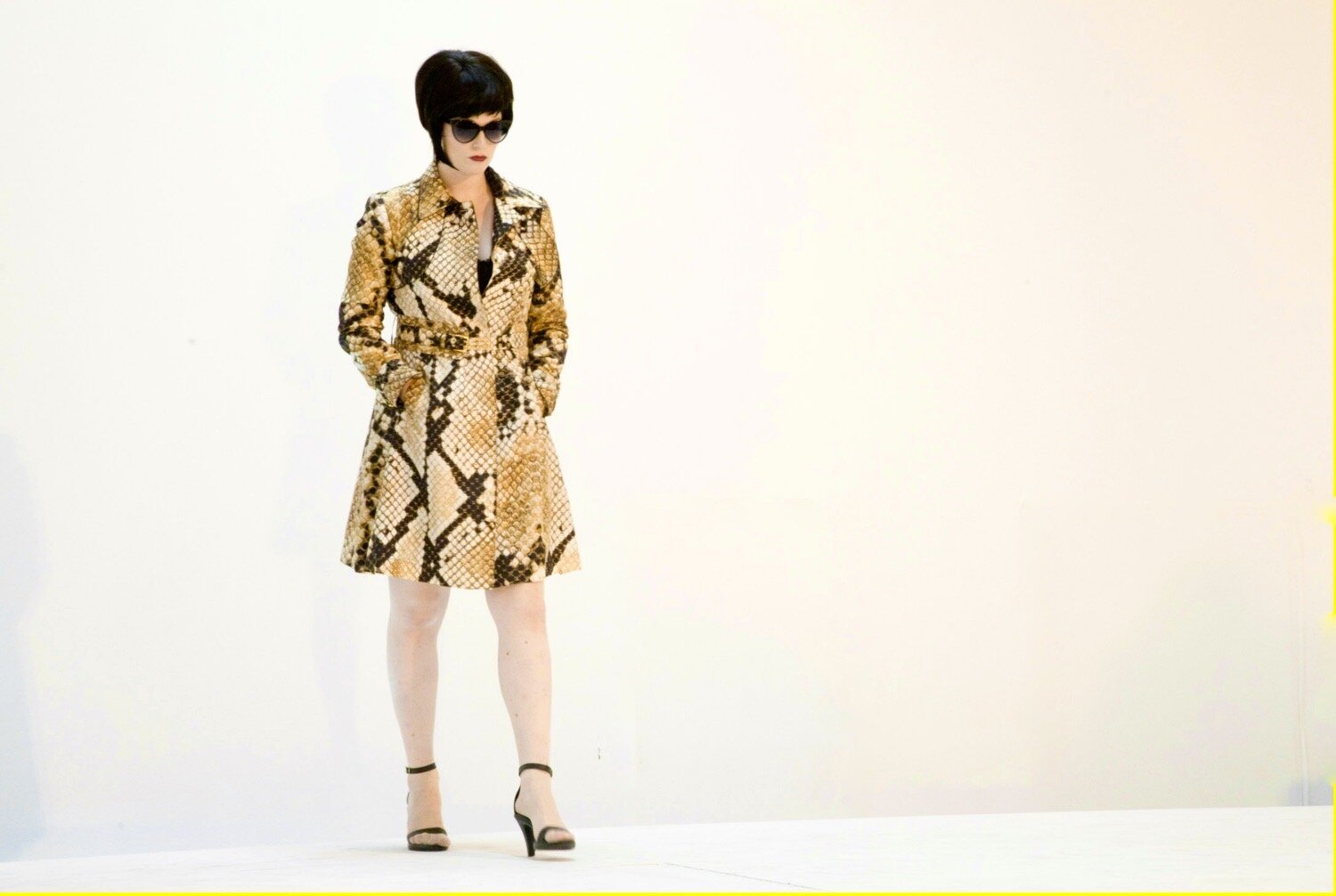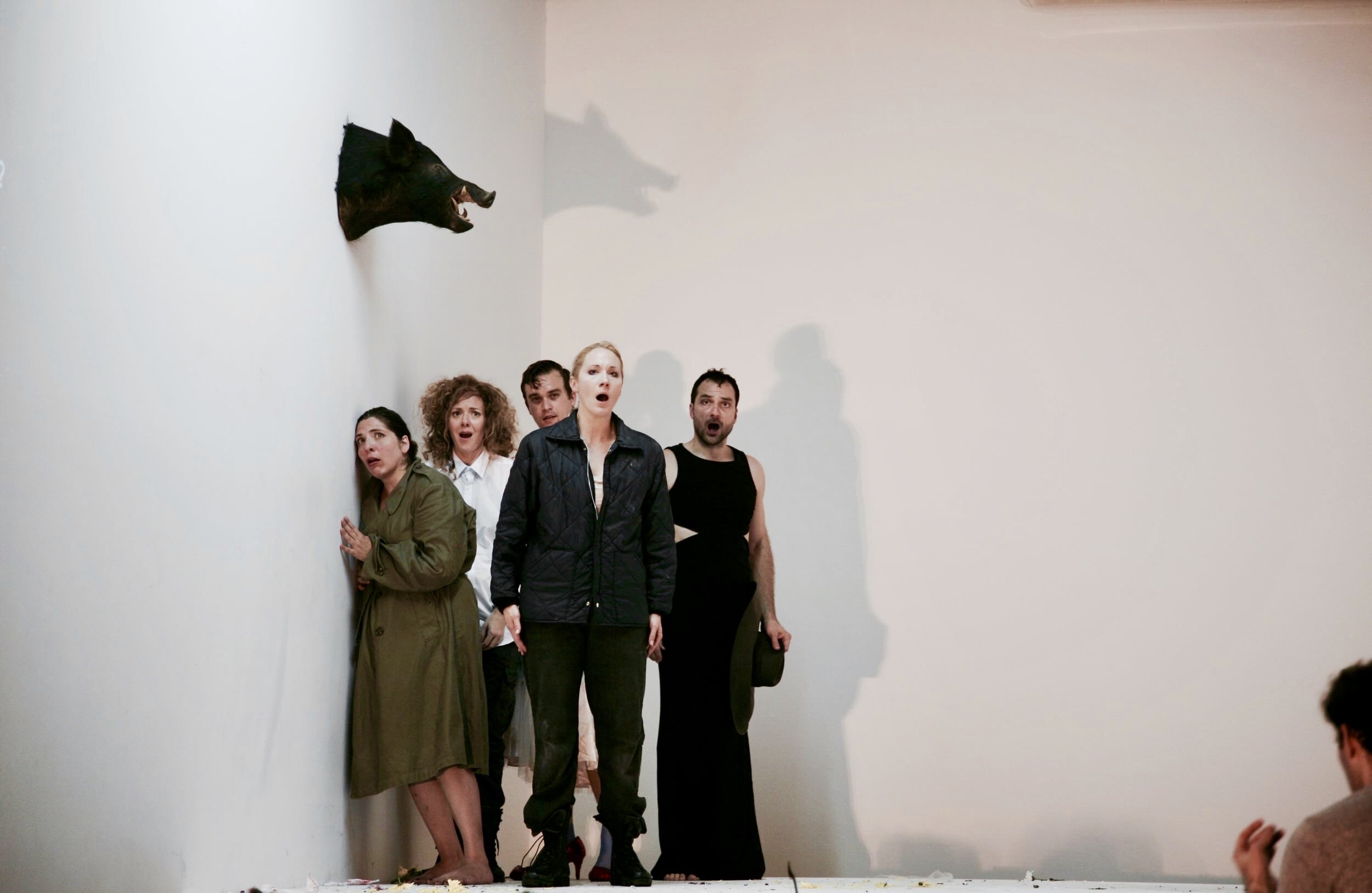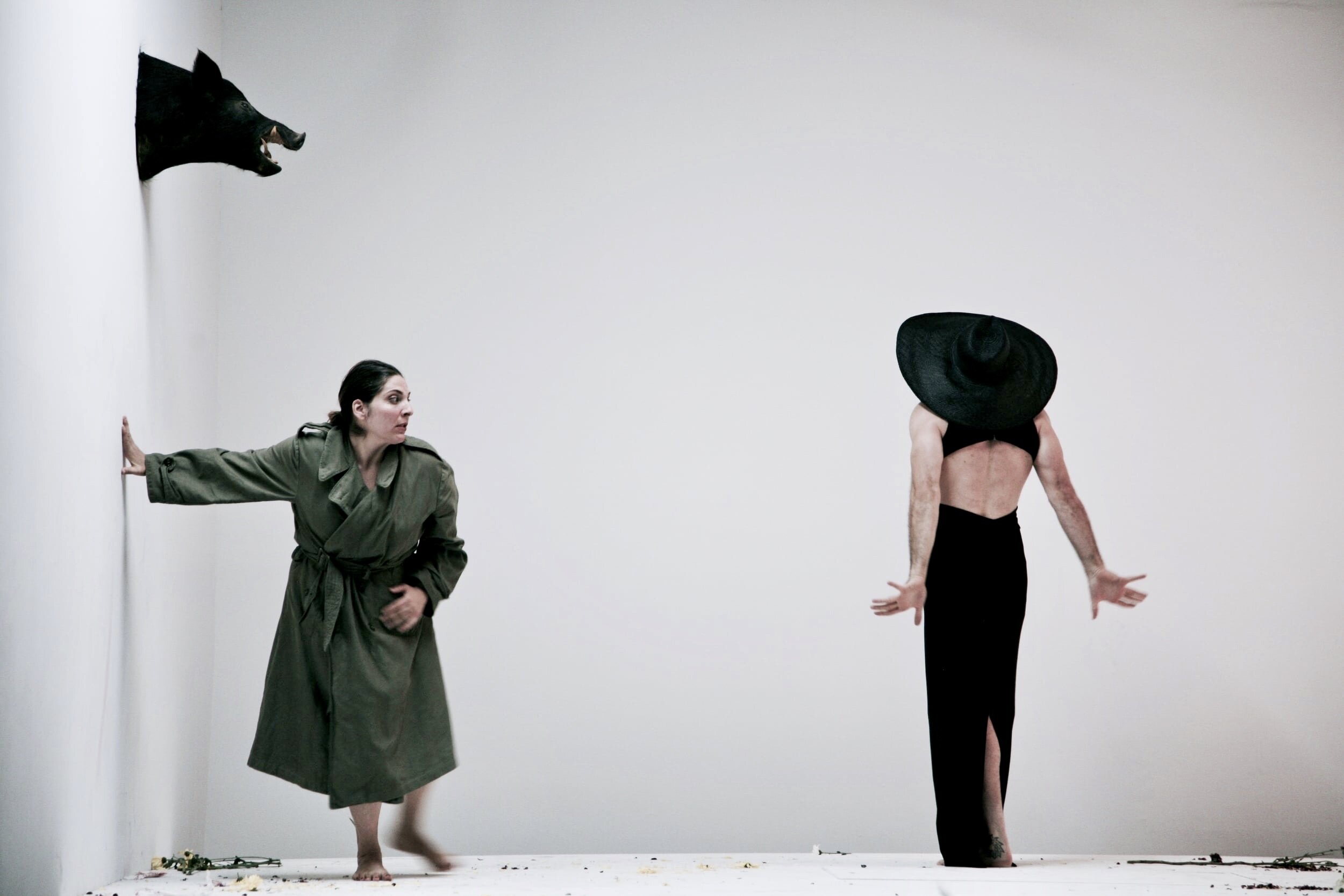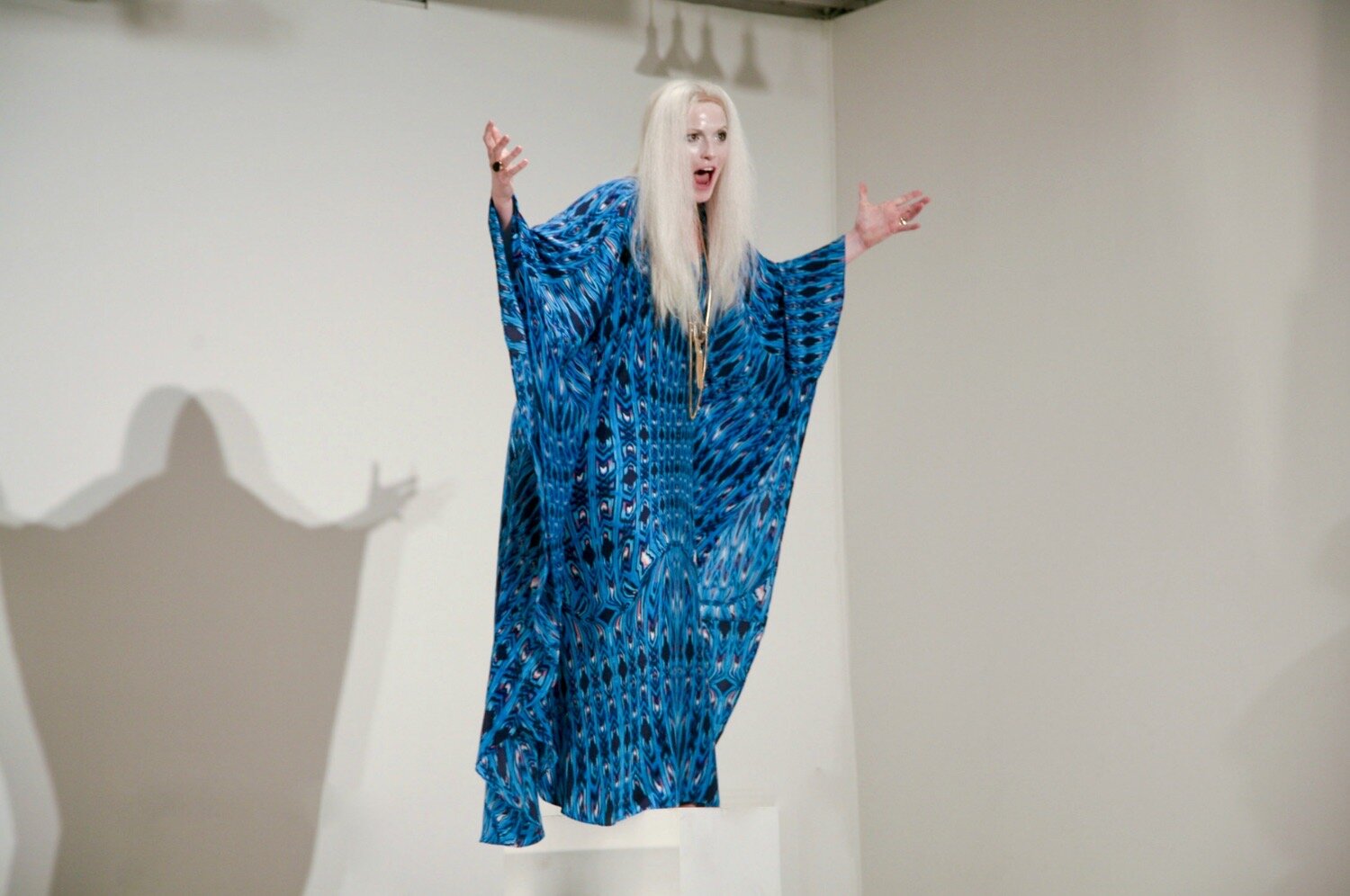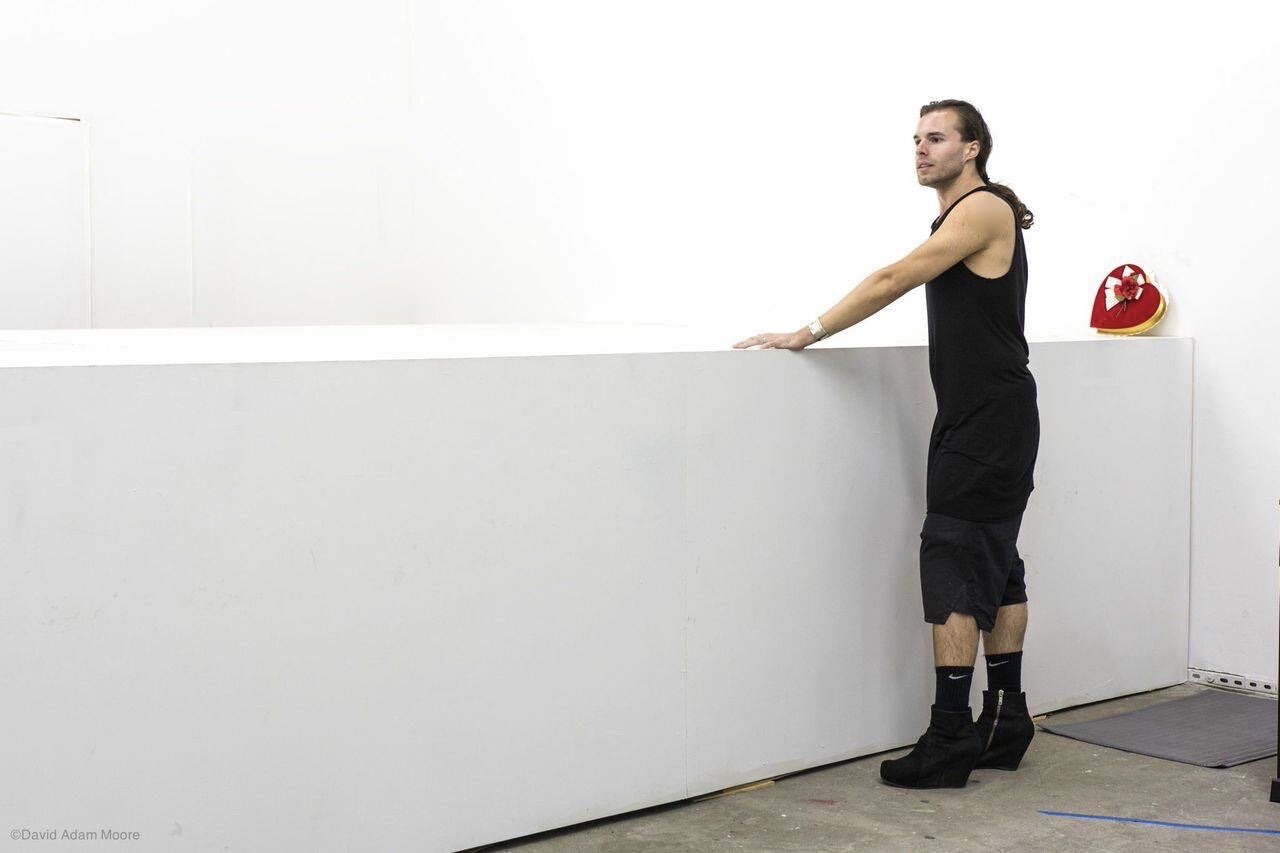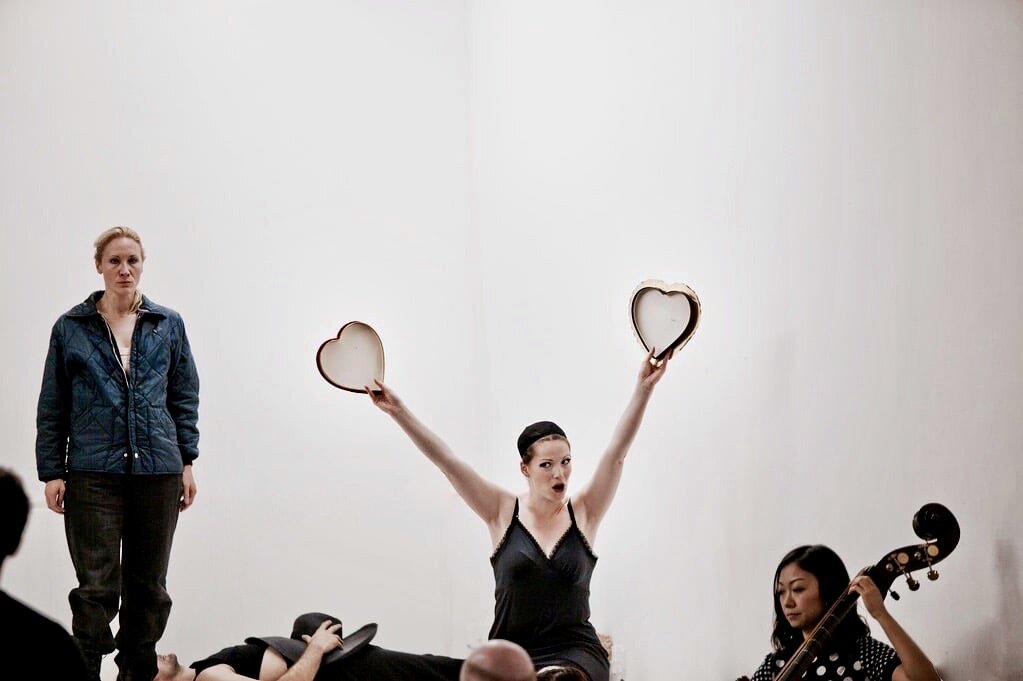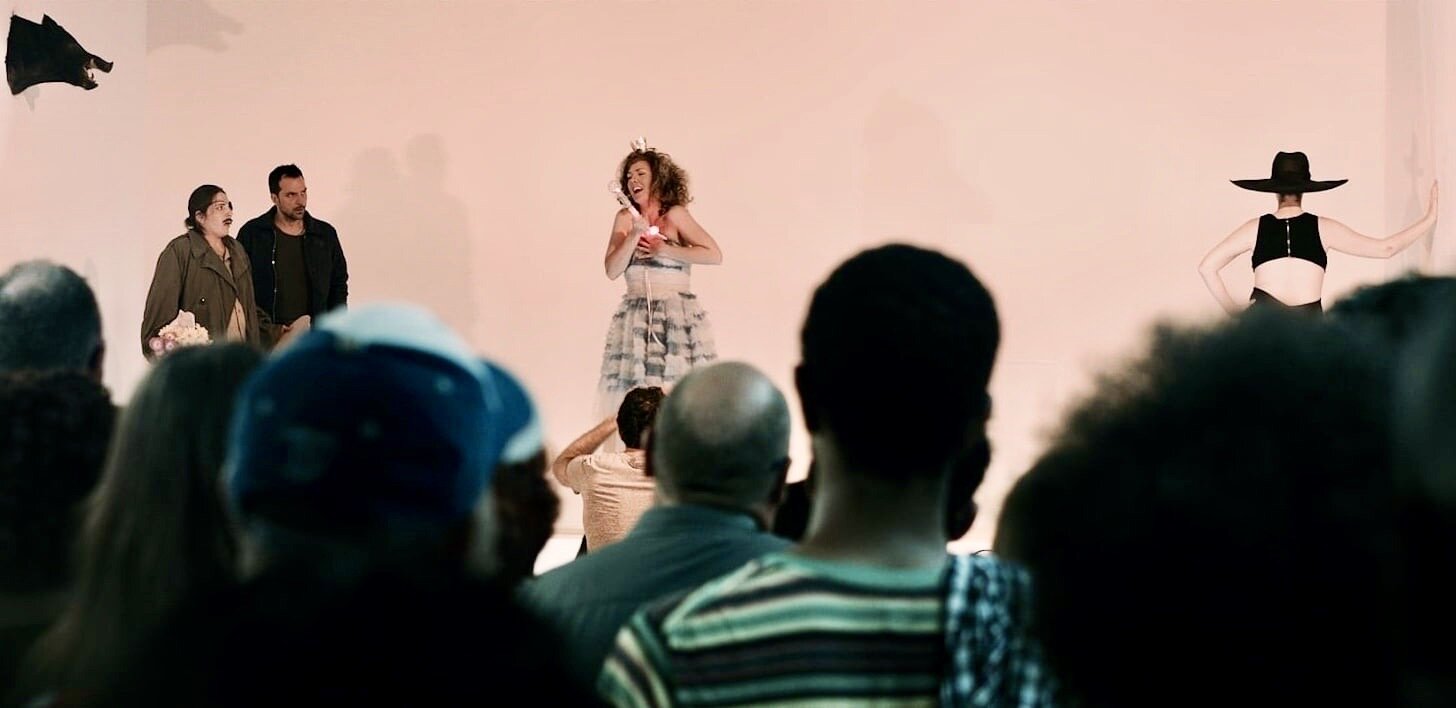
ALCINA
Installation September 2014 \ Whitebox Art Center, Chinatown \ opera by Händel \ directed by R. B. Schlather \ music director Geoffrey McDonald \ scenography Paul Tate DePoo \ costume Terese Wadden \ light JAX Messenger \ hair and makeup Dave Bova \ supertitles Steven Jude Tietjen \ repetiteur Elliot Figg \ stage manager Audrey Chait \ assistant Emily Cuk \ photographs Michael Hart \ with Anne Carolyn Bird, Eve Gigliotti, Jamie Van Eyck, Samuel Levine, David Adam Moore, and Katharina Hagopian
“A triumph of illusionism without any apparatus. Under the spell of Alcina and R. B. Schlather, one would not have taken any notice of other possibilities of entertainment.”
— Frankfurter Allgemeine Zeitung
“So much has been missing since the dissolution of New York City Opera last year. While smaller organizations and festivals have filled some of the void, a particular regret is losing the intriguing, inventive directorial vision City Opera showed at its best. It was partly its whiff of that old adventurousness that made R. B. Schlather’ s production of Handel’s Alcina so affecting. Staged in an intimate, plain gallery space decorated with little more than a smudge of lipstick on one wall and a snarling boar’s head mounted on another, this Alcina, seen on Sunday, elegantly and entertainingly conjured a catalog of human emotions in its collision of confused, desperate lovers.
Her voice full of heat as the sorceress Alcina, the soprano Katharina Hagopian was sometimes poignantly needy and sometimes a fiercely funny caricature of rage. The production’s variegated, slightly surreal feel had room for both the bright-toned soprano Anne-Carolyn Bird’s endearingly dopey Morgana and the mezzo Jamie Van Eyck’s haunted, vacant-eyed Ruggiero, eloquent in her character’s exquisite slow arias.
As Bradamante, who travels to rescue her lover from Alcina’s clutches, the mezzo Eve Gigliotti, her voice powerful and agile, was comically yet movingly torn between her mission and her desires. The tenor Samuel Levine was a volatile Oronte, and the baritone David Adam Moore a resonant Melisso.
The score, one of Handel’s most glorious, was substantially yet smartly trimmed — losing a minor character and some ballet music — by Mr. Schlather and the conductor, Geoffrey McDonald, who led a performance alert to both the overall momentum and the shape of individual numbers. The designs were ingenious, including Paul Tate dePoo’s deceptively simple set, full of clever exits and entrances; Terese Wadden’s stylish costumes; JAX Messenger’s lighting, which did a great deal with very little; and Dave Bova’s evocative hair and makeup.
The production’s two weeks of rehearsals were free and open to the public, and the performances were streamed live on the Internet as well as broadcast on a television in the gallery’s front window, a welcoming and welcome degree of openness for an art form that intimidates many. Mr. Schlather has said he and the Whitebox Art Center would like to do something similar with Orlando and Ariodante, completing the trio of Handel operas based on Ludovico Ariosto’s epic “Orlando Furioso.” This is a valuable project that deserves enthusiastic support.”
— Zachary Woolfe, The New York Times

